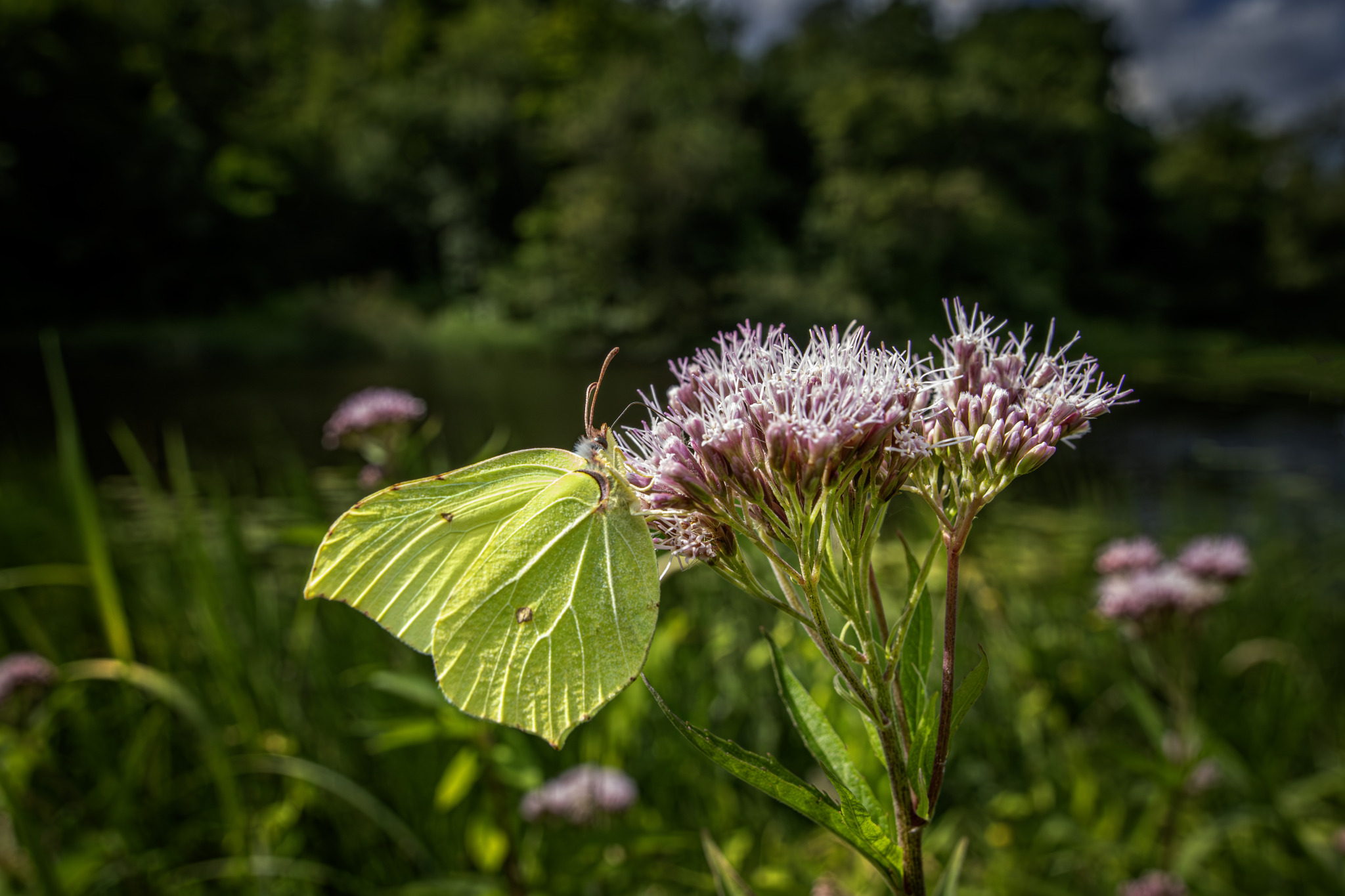The Common Brimstone (Gonepteryx rhamni) is a striking butterfly known for its vibrant lemon-yellow wings, which give it the appearance of a flying leaf. It is one of the longest-lived butterflies in temperate regions and is considered a herald of spring as it often emerges early in the year.
Physical Description
- Size:
- Wingspan: 55–70 mm (2.2–2.8 inches).
- Coloration:
- Males: Bright yellow wings with a small orange spot in the center of each wing.
- Females: Pale greenish-white, also with central orange spots.
- Both sexes have wings with a distinctive leaf-like shape and venation.
- Underside:
- Greenish-yellow, mimicking the texture and color of leaves for camouflage.
Behavior
- Flight Period:
- Flies in two main periods: March–May and again in August–October, with adults overwintering and reappearing in early spring.
- Feeding:
- Adults feed on nectar from flowers such as dandelions, clover, and knapweed.
- Caterpillars feed on leaves of buckthorn species (Rhamnus cathartica and Frangula alnus).
- Overwintering:
- Adults hibernate in dense vegetation, making them one of the few butterfly species that overwinter as adults.
Habitat
- Found in a variety of sunny habitats, including:
- Woodland edges and clearings.
- Hedgerows and gardens.
- Meadows and scrubland with an abundance of nectar sources and host plants.
Life Cycle
- Eggs:
- Laid singly on host plants, especially buckthorn, in late spring or early summer.
- Caterpillars:
- Green with white stripes along the sides, feeding on host plant leaves.
- Pupa:
- Suspended from plants and camouflaged as a curled leaf.
- Adults:
- Emerge in summer, feeding and mating before hibernation.
Distribution
- Widely distributed across Europe, North Africa, and parts of Asia.
- Found in temperate climates, from sea level to mountainous regions.
Conservation Status
- Classified as Least Concern, with stable populations across its range.
- Vulnerable to habitat loss due to changes in agricultural practices and deforestation.
Ecological Role
- Pollination:
- Plays a significant role in pollinating various wildflowers.
- Indicator Species:
- Presence indicates healthy ecosystems with suitable host plants.
Interesting Facts
- Longevity:
- The Common Brimstone can live up to a year, one of the longest lifespans among European butterflies.
- Name Origin:
- Its bright yellow coloration inspired the term “butterfly,” derived from “butter-colored fly.”
- Camouflage Mastery:
- Its wing shape and coloration provide excellent camouflage, mimicking leaves and protecting it from predators.
Summary
The Common Brimstone (Gonepteryx rhamni) is a remarkable butterfly, celebrated for its beauty, resilience, and ecological importance. Its early spring emergence and striking yellow wings make it a favorite among butterfly watchers. Conservation of its habitats, particularly the availability of buckthorn plants, is vital for sustaining its populations.
Visited 242 times, 7 visit(s) today
Views: 749
Subscribe to the newsletter:
